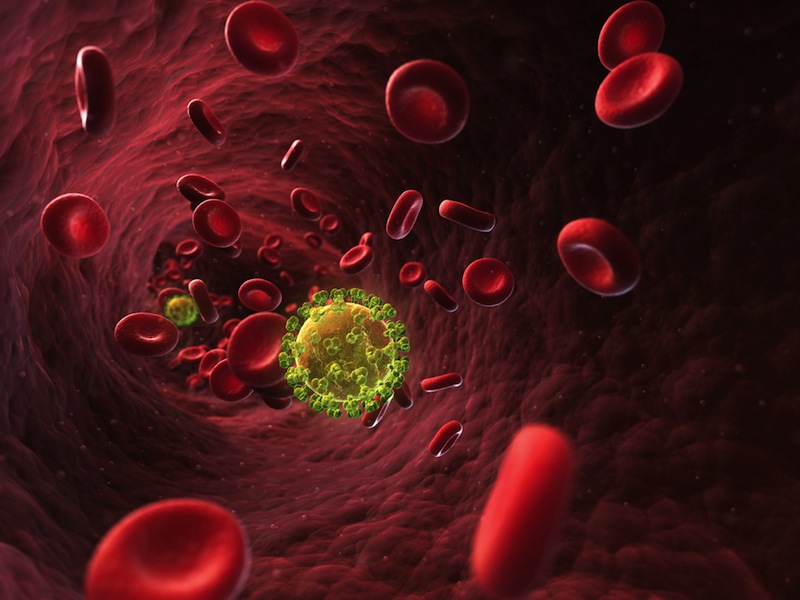When you purchase through linkup on our internet site , we may earn an affiliate delegacy . Here ’s how it works .
A man in the United Kingdom may be the second somebody ever to be cured of HIV .
The raw patient , who was diagnosed with the computer virus in 2003 , is likely HIV - free after a specialbone - marrow transplantation , according to a new paper of his case .

The researchers monish that it ’s too soon to say for indisputable if the serviceman has been definitively cured of HIV . But the patient has experienced tenacious - term remission from the virus without the need for medicament for 18 month . [ 27 annihilating infective Diseases ]
The pillowcase score only the second time ever that MD have used this particular discussion to on the face of it eliminate the computer virus from a person ’s body . The first affected role — known as theBerlin patient — get a similar ivory - heart organ transplant in 2007 and has been HIV - free for more than a decade .
" By reach [ HIV ] remission in a second patient role using a similar approach , we have prove that the Berlin patient role was not an unusual person , and that it really was the treatment … that extinguish HIV in these two people , " lead sketch author Dr. Ravindra Gupta , a professor in the Division of Infection and Immunity at University College London , said in a statement .

However , the researchers stress that such a osseous tissue - heart transplantation would not work as a standard therapy for all patients with HIV . Such transplants are risky , and both the Berlin patient and the man in the new compositor’s case , called the London patient , needed the transplants to handle cancer , rather than HIV .
But future therapy could aim to mimic the treatment without the need for a bone - marrow graft .
The paper will be published today ( March 5 ) in thejournal Nature .

A special transplant
Prior to his transplant , the London affected role was taking antiretroviral medications to wangle his HIV . In 2012 , he was diagnosed with Hodgkin ’s lymphoma , a character of origin Crab that required treatment with a ivory - marrow organ transplant , also bed as hematogenic root word cellular phone transplant .
The radical cells used for the transplant came from a presenter who had a comparatively rare familial mutation that confersresistance to HIV . Specifically , the donor had a genetic mutation in a gene that codes for a protein called CCR5 , which HIV apply as a " port " to get inside cells . Essentially , the mutation prevents HIV from being able to get inside people ’s cells , so it can not cause infection .
The London patient has been off HIV medications for 18 month now , and is still HIV - free , the research worker state . They will continue to monitor the affected role to determine if he has been definitively cured ( meaning the HIV does not come back ) .

New treatments?
The new case report is " another proof of conception that we can eradicate HIV in theses situations , " say Dr. Amesh Adalja , a senior scholarly person at the Johns Hopkins Center for Health Security in Baltimore , who was not postulate in the report .
Adalja noted that although the Berlin affected role and the London patient receive standardized handling , the Berlin patient ’s treatment was more intense — he receive two bone - substance transplants in addition to whole - dead body ray of light ( radiation photo to the whole body ) . The Modern story shows that doctors do n’t have to practice as intense a treatment regimen as the Berlin patient role underwent for achieve achiever .
Although a bone - marrow transplant can not be a standard treatment for HIV , doctors can expend what they read in these special cases to seek to evolve new treatment that could be used by more people , Adalja said .

For good example , the Berlin patient and the London patient " show that when you eliminate CCR5 , you’re able to effectively cure these patients , " Adalja say . So doctors could break other ways to target CCR5 , such as withgene therapy , to forestall the formula of the gene .
Such a gene therapy would be very unlike from what bechance totwin babies in China last year , who reportedly had their genomes redact with CRISPR to remove the CCR5 cistron . The goal of such editing , the scientist who did it said , was to reduce the babies ' risk of drive HIV . But in that case , the baby had their genes edited before nativity and did not have HIV to set out with .
" Going after CCR5 in … patients who already have HIV might be a very powerful tool we can use , " and is not the same affair as genome redaction in people who do n’t have HIV , Adalja say .

to begin with published onLive Science .












